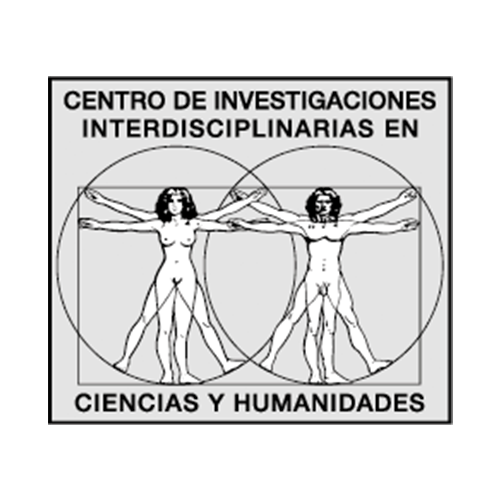El rol de la función de transferencia de contraste en la formación de imágenes de resolución atómica de nanopartículas
Main Article Content
Abstract
High resolution transmission electron microscopy results can be quantitatively interpreted if an optimum adjustment is performed in the optical-electronic of the instrument during the atomic resolution images acquisition. This work qualitatively describe the principles of imaging formation by using the theory of electron diffraction and electronic-optics. At the end the process it is summarized to the contrast transfer function (CTF) and defocus. The controlled and precise manipulation of the defocus allows the CTF to be controlled to achieve stronger phase contrast of the d-spacings of the crystalline lattice of the particle under study. The contrast that can be achieved is bright or dark at values more negative of the Scherzer defocus. Dark contrasts of WOx clusters on crystalline lattice of bright contrast corresponding to the m-ZrO2 nanoparticle was evidenced through of a controlled and precise manipulation of the defocus.
Downloads
Article Details

Mundo Nano. Revista Interdisciplinaria en Nanociencias y Nanotecnología por Universidad Nacional Autónoma de México se distribuye bajo una Licencia Creative Commons Atribución-NoComercial 4.0 Internacional.
Basada en una obra en http://www.mundonano.unam.mx.
References
Akhtar, S. (2012). Transmission electron microscopy of graphene hydrated biomaterials nanostructures: Novel techniques and analysis. Thesis dissertation, Faculty of Science and Technology, Uppsala University, Uppsala, Sweden. http://urn.kb.se/resolve?urn=urn:nbn:se:uu:diva-171991
Allen, L. J., McBride, W., O’Leary, N. L., Oxley, M. P. (2004). Exit wave reconstruction at atomic resolution. Ultramicroscopy, (100) 91. https://doi.org/10.1016/j.ultramic.2004.01.012 DOI: https://doi.org/10.1016/j.ultramic.2004.01.012
Angeles-Chávez, C., Cortés-Jácome, M.A., Torres-García, E., Toledo-Antonio, J. A. (2006). Structural evolution of WO3 nanoclusters on ZrO2. Journal Materials Research, 807. https://doi.org/10.1557/jmr.2006.0100 DOI: https://doi.org/10.1557/jmr.2006.0100
Bals, R. S., Van Aert, S., Van Tendeloo, G., Avila-Brande, D. (2006). Statistical estimation of atomic positions from exit wave reconstruction with a precision in the picometer range. Phys. Rev. Lett. (96): 096106. https://doi.org/10.1103/PhysRevLett.96.096106 DOI: https://doi.org/10.1103/PhysRevLett.96.096106
Barthel, J. (2008). Ultra-precise measurement of optical aberrations for sub-angström transmission electron microscopy. Thesis dissertation, Von der Fakultät für Mathematik, Informatik und Naturwissenschaften der Rheinisch-Westfälischen Technischen Hochschule, Germany, N. p., Web. https://www.osti.gov/etdeweb/biblio/21084262
Borodko, Y., Ercius, P., Pushkarev, V., Thompson, C., Somorjai, G. (2012). From single Pt atoms to Pt nanocrystals: Photoreduction of Pt2+ inside of a PAMAM dendrimer. J. Phys. Chem.Lett., (3): 236. https://doi.org/10.1021/jz201599u DOI: https://doi.org/10.1021/jz201599u
Brent, F., Howe, J. M. (2008). Transmission electron microscopy and diffractometry of materials, 3a ed. Springer-Verlag, Berlín, Heidelberg. https://doi.org/10.1007/978-3-540-73886-2 DOI: https://doi.org/10.1007/978-3-540-73886-2
Danev, R., Okawara, H., Usuda, N., Kametani, K., Nagayama, K. (2002). A novel phase–contrast transmission electron microscopy producing high–contrast topographic images of weak objects. J. Biol. Phys., (28): 627. https://doi.org/10.1023/A:1021234621466 DOI: https://doi.org/10.1023/A:1021234621466
De Ruijter, W. J., Sharma, R., McCartney, M. R., Smith, D. J. (1995). Measurement of lattice–fringe vectors from digital HREM images: experimental precision. Ultramicroscopy, (57): 409. https://doi.org/10.1016/0304-3991(94)00166-K DOI: https://doi.org/10.1016/0304-3991(94)00166-K
Hawkes, P. W. (2015). The correction of electron lens aberrations. Ultramicroscopy, (156) A1. doi.org/10.1016/j.ultramic.2015.03.007 DOI: https://doi.org/10.1016/j.ultramic.2015.03.007
Horiuchi, S., He, L. (2000). High-resolution transmission electron microscopy, characterization of high Tc materials and devices by electron microscopy, Nigel D. Browning, Stephen J. Pennycook (eds.). Cambridge. https://doi.org/10.1017/CBO9780511534829 DOI: https://doi.org/10.1017/CBO9780511534829.002
Hosokawa, F., Shinkawa, T., Arai, Y., Sannomiya, T. (2015). Benchmark test of accelerated multi-slice simulation by GPGPU. Ultramicroscopy, (15): 856. https://doi.org/10.1016/j.ultramic.2015.06.018 DOI: https://doi.org/10.1016/j.ultramic.2015.06.018
Hsieh, W. K., Anderson, E. H., Benner, G., Park, M. J., Gómez, E.D., Balsara, N.P., Kisielowski, C. (2007). Contrast transfer function design by an electrostatic phase plate. Microsc. Microanal., (13): 2. https://doi.org/10.1017/S1431927607073874 DOI: https://doi.org/10.1017/S1431927607073874
Hyeong-Seop, J., Hyo-Nam, P., Jin-Gyu, K., Jae-Kyung, H. (2013). Critical importance of the correction of contrast transfer function for transmission electron microscopy-mediated structural biology. J. Anal. Sci. Technol., (4): 14. https://doi.org/10.1186/2093-3371-4-14 DOI: https://doi.org/10.1186/2093-3371-4-14
Jia, C. L., Urban, K. (2004). Atomic–resolution measurement of oxygen concentration in oxide materials. Science (303): 2001. https://doi.org/10.1126/science.1093617 DOI: https://doi.org/10.1126/science.1093617
Kleebe, H-J., Lauterbach, S., Müller, M. (2010). Transmission electron microscopy (TEM). Bunsen-Magazin, (5): 168. https://www.yumpu.com/en/document/read/17191295/bunsen-magazin-deutsche-bunsengesellschaft-fur-physikalische-
Lentzen, M. (2008). Contrast transfer and resolution limits for sub–angstrom high–resolution transmission electron microscopy. Microsc. Microanal., (14): 16. https://doi.org/10.1017/S1431927608080045 DOI: https://doi.org/10.1017/S1431927608080045
Lentzen, M., Jahnen, B., Jia, C.L., Thust, A., Tillmann, K., Urban, K. (2002). High resolution imaging with aberration–corrected transmission electron microscopy, Ultramicroscopy, (92): 233. https://doi.org/10.1016/S0304-3991(02)00139-0 DOI: https://doi.org/10.1016/S0304-3991(02)00139-0
Nagayama, K., Danev, R. (2008). Phase contrast electron microscopy: Development of thin–film phase plates and biological applications. Phil. Trans. R. Soc. B, (363): 2153. https://doi.org/10.1098/rstb.2008.2268 DOI: https://doi.org/10.1098/rstb.2008.2268
Op de Beeck, M., Van Dyck, D. (1996). Direct structure reconstruction in HRTEM. Ultramicroscopy, (64): 153. https://doi.org/10.1016/0304-3991(96)00006-X DOI: https://doi.org/10.1016/0304-3991(96)00006-X
Op de Beeck, M., Van Dyck, D., Coene, W. (1996). Wave function reconstruction in HRTEM: the parabola method. Ultramicroscopy, (64): 167. https://doi.org/10.1016/0304-3991(96)00058-7 DOI: https://doi.org/10.1016/0304-3991(96)00058-7
Ophus, C. (2019). Four–dimensional scanning transmission electron microscopy (4D-STEM): From scanning nanodiffraction to ptychography and beyond. Microsc. Microanal., (25): 563. https://doi.org/10.1017/S1431927619000497 DOI: https://doi.org/10.1017/S1431927619000497
Peng, Y., Oxley, M. P., Lupini, A. R., Chisholm, M. F., Pennycook, S. J. (2008). Spatial resolution and information transfer in scanning transmission electron microscopy, Microsc. Microanal., (14): 36. https://doi.org/10.1017/S1431927608080161 DOI: https://doi.org/10.1017/S1431927608080161
Presenza-Pitman, G. (2009). Determination of the contrast and modulation transfer functions for high resolution imaging of individual atoms. Thesis dissertation, Department of Physics, University of Toronto, Toronto, Ontario. https://www.researchgate.net/publication/253639776
Rodríguez, A. G., Beltrán, L. M. (2001). SimulaTEM: a program for the multislice simulation of image and diffraction patterns of non–crystalline objects. Rev. Latin Am. Metal. Mat. (21): 46. http://ve.scielo.org/scielo.php?script=sci_arttext&pid=S0255-69522001000200009
Sibarita, J-B. (2005). Deconvolution microscopy. Adv. Biochem. Engin./Biotechnol., (95) 201. https://doi.org/10.1007/b102215 DOI: https://doi.org/10.1007/b102215
Stroppa, D. G., Montoro, L. A., Beltrán, A., Conti, T. G., Da Silva, R. O., Andrés J., Longo, E., Leite, E. R., Ramírez, A. J. (2009). Unveiling the chemical and morphological features of Sb-SnO2 nanocrystals by the combined use of high–resolution transmission electron microscopy and ab initio surface energy calculations. J. Am. Chem. Soc., (131): 14544. https://doi.org/10.1021/ja905896u DOI: https://doi.org/10.1021/ja905896u
Su, D. (2017). Advanced electron microscopy characterization of nanomaterials for catalysis. Green Energy & Environment, (2): 70. https://doi.org/10.1016/j.gee.2017.02.001 DOI: https://doi.org/10.1016/j.gee.2017.02.001
Takai, Y., Ando, T., Ikuta, T., Shimizu, R. (1997). Principles and applications of defocus–image modulation processing electron microscopy. Scanning Microscopy, (11): 391. https://www.ecmjournal.org/smi/pdf/smi97-30.pdf
Thomas, J. M. (2017). Reflections on the value of electron microscopy in the study of heterogeneous catalysts. Proc. R. Soc. A, (473): 20160714. https://doi.org/10.1098/rspa.2016.0714 DOI: https://doi.org/10.1098/rspa.2016.0714
Thust, A., Coene, W. M. J., Op de Beeck, M., Van Dyck, D. (1996). Focal–series reconstruction in HRTEM: simulation studies on non–periodic objects. Ultramicroscopy, (64): 211. https://doi.org/10.1016/0304-3991(96)00011-3 DOI: https://doi.org/10.1016/0304-3991(96)00011-3
Tromp, R. M., Schramm, S. M. (2013). Optimization and stability of the contrast transfer function in aberration–corrected electron microscopy. Ultramicroscopy, (125): 72. https://doi.org/10.1016/j.ultramic.2012.09.007 DOI: https://doi.org/10.1016/j.ultramic.2012.09.007
Urban, K. W. (2008). Studying atomic structures by aberration–corrected transmission electron microscopy. Science, (321): 506. https://doi.org/10.1126/science.1152800 DOI: https://doi.org/10.1126/science.1152800
Van Tendeloo, G., Bals, S., Van Aert, S., Verbeeck, J., Van Dyck, D. (2012). Advanced electron microscopy for advanced materials. Adv. Mater., (24): 5655. https://doi.org/10.1002/adma.201202107 DOI: https://doi.org/10.1002/adma.201202107
Vulovic, M., Franken, E., Ravelli, R. B. G., Van Vliet, L. J., Rieger, B. (2012). Precise and unbiased estimation of astigmatism and defocus in transmission electron microscopy. Ultramicroscopy, (116): 115. https://doi.org/10.1016/j.ultramic.2012.03.004 DOI: https://doi.org/10.1016/j.ultramic.2012.03.004
Wen-Kuo, H., Fu-Rong, Ch., Ji-Jung, K., Kirkland, A. I. (2004). Resolution extension and exit wave reconstruction in complex HREM. Ultramicroscopy, (98): 99. https://doi.org/10.1016/j.ultramic.2003.08.004 DOI: https://doi.org/10.1016/j.ultramic.2003.08.004
Yang, C., Jiang, W., Chen, D. H., Adiga, U., Ng, E. G., Chiu, W. (2009). Estimating contrast transfer function and associated parameters by constrained non–linear optimization. Journal of Microscopy, (233): 391. https://doi.org/10.1111/j.1365-2818.2009.03137.x DOI: https://doi.org/10.1111/j.1365-2818.2009.03137.x
Young–Min, K., Jong–Man, J., Jin–Gyu, K., Youn–Joong, K. (2006). Image processing of atomic resolution transmission electron microscope images. J. Korean Phys. Soc., (48): 250. https://www.springer.com/journal/40042
Zhu, J., Penczek, P. A., Schröder, R., Frank, J. (1997). Three–dimensional reconstruction with contrast transfer function correction from energy–filtered cryoelectron micrographs: Procedure and application to the 70S Escherichia coli ribosome. J. Struct. Biol., (118): 197. https://doi.org/10.1006/jsbi.1997.3845 DOI: https://doi.org/10.1006/jsbi.1997.3845





